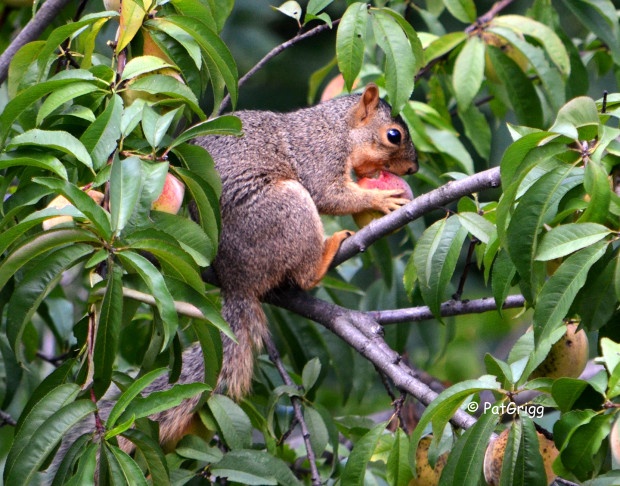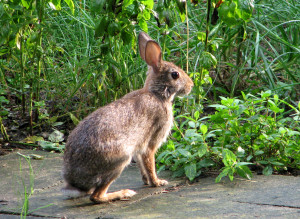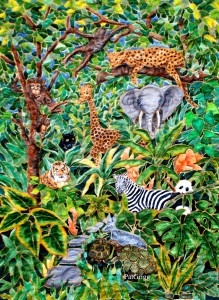We have much more to do and your continued support is needed now more than ever.
Gardening for Wildlife in Indiana
Guest post by Certified Wildlife Habitat participant Pat Grigg.
Gardening for wildlife was not the original plan for my modest-sized garden. Many years ago I planted flowering plants, shrubs and trees to be seen from every window, and to flower from spring to fall.


In addition, the raspberries, mulberries, blackberries and blueberries in the back garden attracted many varieties of birds. Several times a day the cardinals would visit the big leaf magnolia tree, whose white flowers were the size of dinner plates, to feed on their red seeds. I often see the bluejays flying off with the peanuts I put out for them. The bird feeders and the gourd bird houses also keep the many different birds, such as chickadees, nuthatches, wrens, mourning doves, and sparrows visiting.
The wildlife visitors include rabbits that come into the patio to taste my herbs, the occasional deer that prune my plants and chipmunks that scurry across the deck. I have seen raccoons, frogs, ladybugs, fireflies, dragonflies, moths, praying mantis, grasshoppers and other insects. The most interesting sight was a moth camouflaged extremely well on a dried oak leaf. The fox squirrels are residents in my garden, and they could be observed enjoying the sweet juicy peaches on the tree. I had to forget about baking peach pies because the squirrels were not sharing the peaches with me.
What began as a flower garden became a local wildlife resource. Many years ago my garden was a blank canvas, and as it grew so did the visiting wildlife population, their activities and influence. Now I find myself gardening for wildlife.
Become a Wildlife Gardener with National Wildlife Federation. It’s free and you’ll get great wildlife gardening tips and learn how to certify your garden as an official habitat.
Wildlife Art Exhibition
 It is my privilege to have been invited to exhibit my wildlife art, from January until end of May 2014. This is going to be the most interesting and enriching art show I have ever had.
It is my privilege to have been invited to exhibit my wildlife art, from January until end of May 2014. This is going to be the most interesting and enriching art show I have ever had.
The display will include:
- Photographs taken in the Rockies, across the Plains and along the Florida coast
- Wildlife paintings
- Wildlife fabric art, and
- Wildlife picture story books.
The exhibition will be held on the campus of Rose-Hulman Institute of Technology in Terre Haute, Indiana, where I have previously painted three large wildlife wall murals. The show will be open to the public.
This exhibition provides me with a great opportunity to promote awareness and education about wildlife. The mission of the National Wildlife Federation “Inspiring Americans to protect wildlife for our children’s future” is a good place for me to start. There will be information on the organization and on gardening for wildlife.
To encourage park visits, I will focus on two national parks with their many varieties of wildlife: Yellowstone National Park (the first national park in the world) and Theodore Roosevelt National Park (a great park to explore).
About the Author
Pat is a wildlife artist who visits wildlife refuges, national and state parks annually to take photographs. She compiles them into many photo journals for family and friends as a way of sharing her appreciation of nature. She recommends Theodore Roosevelt National Park in North Dakota as a place to enjoy wildlife.




















